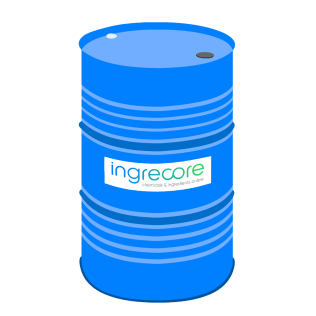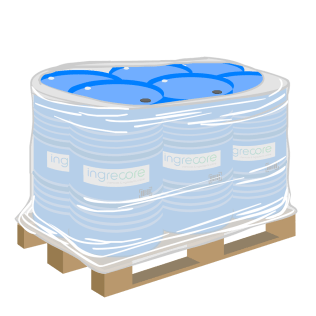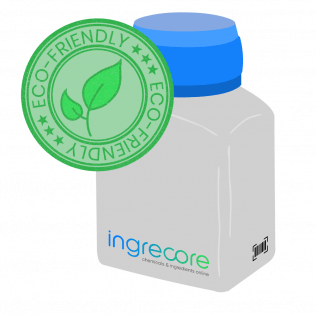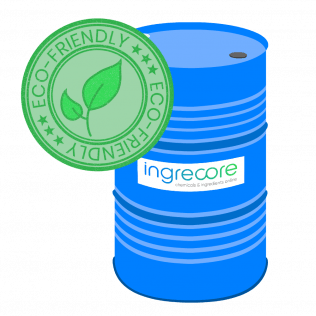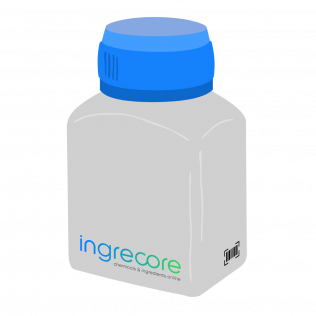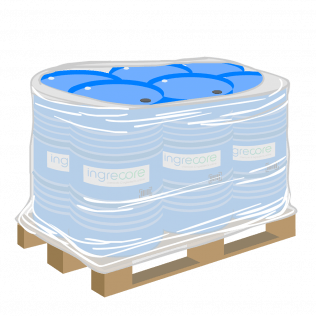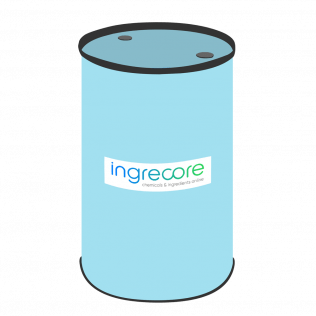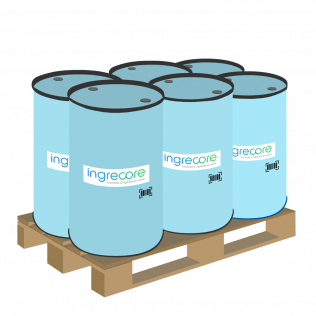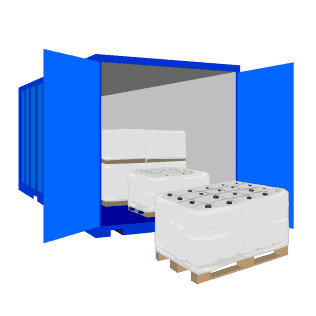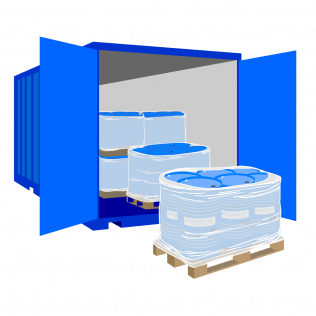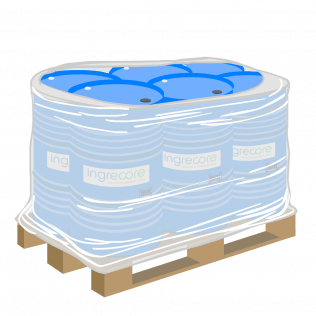- By Market
-
By Application
Body Care Decorative CosmeticsBlushes Eye Shadows Lip & eyeliners Lipsticks & glosses Make-up Foundations Make-up Powders Mascaras Nail VarnishesHair CareHair Colorants Hair Conditioners Hair Lotions Hair Mousses Hair Serums Hair Sprays Hair Texturizers ShampoosHome Dishwash Care Home Fabric Care Home Surface Care Home Vehicle Care I&I Laundry Care I&I Surface care Oral Care Skin Care
-
By Product Function
Actives Conditioning Emollients & Moisturizing Film forming Foaming & Foam Control Opacifying Preservative & AntioxidantAnti Gram-Negative Anti Gram-Positive Antimicrobial Anti-mold Anti-oxidizing Anti-yeast Preservatives Preservative BoosterSolubilizing & Hydrotropes Solvent Surfactants & DetergentsAmphoteric Surfactant Anionic Surfactant Cationic Surfactant Cleansing Degreasing agent Detergents Dispersing agent Emulsifying Non-ionic Surfactant Spreading agent Wetting agentUV Filter Viscosity & Rheology Other Product Functions

Antiperspirants
Antiperspirant Ingredients or chemicals
Description: every human being has sweat glands that secrete sweat in order to cool the skin. Sweating can result in an unpleasant odor if bacteria are present in the moisture. Excessive sweating and its odor can impair vision, comfort and grip and therefore negatively affect one’s life. Therefore, deodorants and antiperspirants are developed and have become part of our daily lives and routines. Antiperspirants are often seen as a subclass of deodorants. Whereas deodorants are generally used to mask or prevent sweaty odors, antiperspirants are used to reduce sweat by blocking sweat glands. Often, antiperspirants are combined with deodorants to create the best possible effect.
Trends and Ingredients: aluminium chloride, aluminium chlorohydrate (Aluminium ChlorohydrateP or Aluminium Chlorohydrate50) and aluminum zirconium are the most used active ingredients in antiperspirants. The aluminium complex in these chemicals reacts with electrolytes found in sweat, creating a kind of gel plug in the ducts of the sweat gland. These plugs block sweat secretion. Deodorants are typically alcohol based to make skin acidic, which is less attractive for bacteria, and they contain perfume to mask odor. Other frequently used antiperspirant and deodorant ingredients are silicone based products (for example IngreSil BDM-960) and preservatives (eg IngreCare PE).
Best available price $6.69/kg
Octyldodecanol
Item #: 1127
Octyldodecanol is a transparent, odorless fatty alcohol. It is compatible for personal care products, where a wide range of pH is required. A medium spreading emollient. Octyldodecanol is a very common base within the formulation of emollient esters. It has very good penetration features with high stability levels, making it appropriate for deodorants, decorative cosmetics and skin care products. This material also has strong solvent, humectant and gloss enhancing features.
Best available price $5.64/kg
C12-15 Alkyl Benzoate
Item #: 1128
What is C12 15 Alkyl Benzoate – the chemical name of C12-15 Alkyl Benzoate is benzoic acid and C12-15 alkyl esters. It’s a clear, low-viscosity liquid and belongs to the group of personal care esters, featuring a lower molecular weight than other esters. Alkyl Benzoate is the benzoic ester of C12-15 fatty alcohols with carbon chain lengths ranging from 12-15. It’s a commonly used synthetic ingredient with a proven track record in cosmetic products. This emollient acts as a wetting and dispersing agent while being highly spreadable. It is a very common component for sunscreens and decorative cosmetics due to its ability to disperse UV filters and pigments. In addition, C12-15 Alkyl Benzoate is used in a variety of skin care, body care, hair care and decorative cosmetic formulations. In cosmetic ingredient review C12 15 alkyl benzoate in skin care, functions as a popular non-oily emollient and skin conditioning agent. The recommended use levels range from 1-5%. The shelf life is 24 months after the date of manufacture. Store product in original, tightly sealed containers, in a cool, dry, and well-ventilated environment. Ensure containers are stored below 30°C. Product has pour point lower than -20°C and can thus be safely stored at around 0°C.
Best available price $3.48/kg
Tetrasodium Glutamate Diacetate
Item #: 2227
Based on Monosodium L-Glutamate (MSG), Glutamate TDA30 is a safe, readily biodegradable chelating and rinsing agent. It is made from vegetable materials in a biochemical process. It has an excellent solubility and is highly effective over a wide pH range. Glutamate TDA30 is also not sensitizing to human skin. All of these properties make Glutamate TDA30 a more effective and safer choice compared to phosphonates or phosphate based chelating and rinsing agents. The INCI name of this product is Tetrasodium Glutamate Diacetate and it's also known as a preservative booster.
Best available price $53.64/kg
Menthol; Menthyl lactate
Item #: 2213
This sensory agent contains natural menthol and menthyl lactate. It provides a quick and long lasting cooling effect and the menthol helps to prevent sun damage and also improves body odor. The use levels of 0.1-4.0% depending on the application make it a cost effective cooling agent. Menthol Methyl Lactate is a colorless to light yellow liquid product, which can be easily formulated in many personal care products. Packaging is in drums and 1 kg bottles with a shelf life of 24 months in unopened package. It should be stored in a cool place. This product is also available without menthol in powder form and is called Menthyl Lactate 98.
Best available price $56.79/kg
Menthyl lactate
Item #: 2212
Menthyl Lactate 98 is a mild active cooling agent for food and personal care applications with a purity of minimum 98%. It can be used in a wide range of personal care products such as body lotions, toothpastes, shampoos, shower gels, deodorants & antiperspirants and for after or pre shave products. Menthyl Lactate is soluble in glycols, ethanol, oils and fragrances. It's a very pure product which doesn't irritate and has a light minty odor. A similar cooling agent in liquid form with Menthol is called Menthol Menthyl Lactate.
Best available price $36.45/kg
Trimethylsiloxysilicate
Item #: 1186
IngreSil TMS-122 is a high molecular weight silicone resin powder. It is an excellent polymer film former, providing a soft film, that improves durability in a wide range of Skin care and Decorative Cosmetic applications. IngreSil TMS-122 is an ideal additive for Decorative Cosmetics and colored make-up products because it provides great stability to color pigments. It's commonly used in products like skin and sun creams and lotions, antiperspirants, lipsticks&glosses, foundations, eye liners and many more Skin Care products.
Best available price $19.49/kg
Dimethicone; Dimethicone/Vinyl Dimethicone Crosspolymer
Item #: 1194
IngreSil BDM-926 is a high molecular weight silicone copolymer dispersion in nonvolatile dimethicone. It boasts great long-lasting film forming properties, making it ideal for Decorative Cosmetics and Skin Care applications. IngreSil BDM-926 imparts a soft, smooth velvet like skinfeel, this in combination with its moisturizing and softening properties, makes it ideal for many products like skin moisturizers, skin and sun creams and lotions, body lotions and many more. In Decorative Cosmetics it leaves a matt, powdery look that can cover tiny skin blemishes. It also provides a water resistance, making it ideal in lipsticks and glosses and cosmetics in powder form.
Best available price $16.99/kg
C30-45 Alkyl Dimethicone
Item #: 1193
IngreSil ALDM-470 is a silicone polymer wax with long alkane carbon chains. The long carbon chains make for excellent moisturizing and lubricating properties while also keeping the product usable in a wide range of applications. In Skin Care, IngreSil ALDM-470 is mostly used in skin moisturizers and skin and sun creams because it can make the skin feel soft and smooth without being tacky. In addition this ingredient is used in antiperspirants and deodorants and also widely used in decorative cosmetics like lipsticks and glosses. IngreSil ALDM-470 excels in bar products, like lipsticks, where it greatly improves performance by reducing pigment migration and making it easier to tint.
Best available price $17.65/kg
Cyclopentasiloxane; Dimethicone Crosspolymer
Item #: 1192
IngreSil BD5-910 is a silicone elastomer in gel form. It's an ultra high molecular weight crosslinked silicone copolymer dispersion in Cyclopentasiloxane. It is frequently used in decorative cosmetics as it is velvety smooth and gives a matte, powdery appearance, allowing it to cover tiny wrinkles and skin imperfections. This ingredient has some cleansing properties, making it a useful additive in skin care products. IngreSil BD5-910 also improves skin affinity of make up products and it increases the longevity of color cosmetics. It's easy to (cold) formulate and imparts a non-tacky feel to the formulation.
Best available price $24.61/kg
Dimethicone; PEG-10 Dimethicone/Vinyl Dimethicone Crosspolymer; Polymethylsilsesquioxane
Item #: 1188
IngreSil BDM-960 is a high molecular weight silicone resin dispersed in polymethylsilsesquioxane. It is frequently used in decorative cosmetics because of its excellent smoothness and skin feel, as well as the velvet look it imparts. It is also popular because of its film forming capabilities, the film provides excellent water resistance and reduces pigment migration. Additionally, IngreSil BDM-960 acts as a rheology modifier, emulsifier and stabilizer. It's most commonly used in lipsticks and glosses, skin/sun creams and lotions, foundations, shampoos, hair conditioners and many more.
Best available price $22.89/kg
PEG-10 Dimethicone
Item #: 1187
IngreSil PEG-10DM-215 is an excellent silicone emulsifier with low viscosity. It is often used to formulate highly stable W/O emulsions and creams. Besides stabilizing and emulsifying, IngreSil PEG-10DM-215 also adds a smooth, light skin feel. It is easy to formulate and highly flexible in its use cases. It is also a great additive to disperse powders in both polar and silicone oil formulations. IngreSil PEG-10DM-215 is used in a wide range of Skin Care and Decorative cosmetic products, from skin/sun creams and lotions to a wide variety of make up products like foundations. It is also commonly used in antiperspirants and skin moisturizers.
Best available price $1.79/kg
PEG-32
Item #: 1178
IngrePol PEG-1500S is a polymer of ethylene oxide in wax-like flakes, with an average molecular weight of 1500. Like all polyethylene glycol surfactants it has good hydroscopic properties. In addition it's an effective non volatile solvent due to its high boiling point and compatible with most organic solvents. IngrePol PEG-1500S is a multifunctional ingredient in numerous personal care and cleaning applications, for example as wetting agent for body cleansers, as moisturizer in antiperspirants, as binder for laundry and dishwashing tabs and can be used in ointments and bath oils, to mention a few applications.
Best available price $18.10/kg
Phenoxyethanol; Ethylhexylglycerin
Item #: 1061
Broadly used within the cosmetic market as a suitable alternative to other preservation system, IngreCare PE suits the need of claims for safety, efficacy and global approval. Highly soluble in alcohol, glycerin and glycols (soluble in water to approximately 1%) and soluble in oils, IngreCare PE is stable and fully effective in pH ranges of 3-12. Stable to discoloration and compatible with a wide range of raw materials, this liquid preservative is based on Phenoxyethanol and is boosted by the multifunctional ingredient Ethylhexylglycerin. With its broad range of capabilities, IngreCare PE is used for the preservation of anhydrous systems, emulsions and aqueous systems while at the same time improving skin feel of the final product.
Best available price $13.40/kg
Cyclopentasiloxane
Item #: 1146
Ingresil D5 is a clear, colorless and volatile polydimethylcyclosiloxane widely used as a base fluid in a wide variety of formulations. Providing excellent spreading properties and enhancing glide, this emollient provides a smooth, non-greasy feeling to the skin. Compatible with a wide range of cosmetic ingredients, Ingresil D5 can be used in skin care products, make-up (eye shadows and mascaras), antiperspirants and hair serums and conditioners.
Best available price $4.19/kg
Aluminium chlorohydrate
Item #: 1136
Soluble in water (up to 60%) or ethyl alcohol (up to 20%), Aluminium ChlorohydrateP is aluminium chlorohydrate in powder form. It's widely used in anti-perspirant deodorant products. Providing protection against odor and wetness from perspiration, this active ingredient can be used for roll-ons, pump-sprays, emulsions and aqueous gels. It can also be incorporated in skin lotions, skin creams and shaving lotions to achieve a slight astringent effect.
Best available price $1.64/kg
Aluminium chlorohydrate
Item #: 1135
Miscible with ethanol or glycerol in any ratio, Aluminium Chlorohydrate50 is widely used in anti-perspirant deodorant products. Providing protection against odor and wetness from perspiration, this active ingredient can be used for roll-ons, pump-sprays, emulsions and aqueous gels. It can also be incorporated in skin lotions, skin creams and shaving lotions to achieve a slight astringent effect.
Best available price $26.19/kg
Dimethicone
Item #: 1133
Ingresil DM350 is a low viscosity linear silicone fluid (dimethicone and it's chemical name is polydimethylsiloxane) with excellent lubricity and spreading properties that can be used in a wide variety of cosmetic applications. Providing a non-tacky moisture barrier in skin creams and lotions, Ingresil DM350 is also an excellent emollient for hair products. Providing the benefits of Detangling, ease of wet-combing, Shine, Soft Feel and Dry Conditioning, Ingresil DM350 is suitable for hair styling and conditioning products. It is non-toxic and inert in nature.
Best available price $26.19/kg
Dimethicone
Item #: 1132
IngreSil DM100 is a low viscosity linear silicone fluid (dimethicone and chemical name is polydimethylsiloxane). It's used in antiperspirants, deodorants, cosmetics, scrubs, shaving products, lip & eyeliners, skin lotions, and sun care products. An excellent spreading agent, IngreSil DM 100 provides protective, non-tacky yet breathable layer to the skin. It can also effectively eliminate the whitening effect of W/O emulsions.
Best available price $15.55/kg
Panthenol; Aqua;
Item #: 1126
A nutrient from the Vitamin B-family, D-Panthenol75 is an anti-inflammatory active that is widely used in skin, hair and nail applications. Known for its many ancillary benefits, D-Panthenol75 is known to boost skin's fibroblasts, reduce fine lines, redness and dry patches in skin and promote the skin's barrier for added protection from environmental toxins. For hair, it provides moisturization and humectant properties leading to increased elasticity, moisture and shine.
Best available price $3.71/kg
Ceteareth-29
Item #: 1121
Ceteareth-29 is a white solid of flakey appearance that is easily soluble in water. This material is a non-ionic surfactant and is also adaptable for formulation with a vast range of surfactants. It is used as a dispersing agent and as solubilizer in personal care applications and can be used also in industrial uses.
Best available price $3.28/kg
Ceteareth-20
Item #: 1120
Cetereath-20 is a non-ionic oil in water (O/W) emulsifier that is widely used in personal care, household and industrial applications. Offering high solubility and serving as a cleanser and wetting agent, Ceteareth-20 is used in emulsion-based cosmetic products including creams, lotions, sprayable lotions, hair conditioners and sunscreen products. It is also used in antiperspirants and deodorants, face care products, hair coloring and conditioning products
Best available price $8.29/kg
PEG-150 Distearate
Item #: 1118
IngrePol PEG-150DS is a polyethylene glycol diester. It has strong thickener features in challenging surfactants formulations and thickens via an associative mechanism. Due to it's nonionic character, no neutralization is needed. IngrePol PEG-150DS is also used as a rheology modifier, to improve formulation efficiency. IngrePol PEG-150DS is a commonly used ingredient in a wide range of hair care, body care and skin care applications, including sunscreen products.
